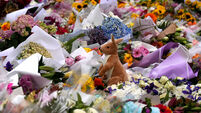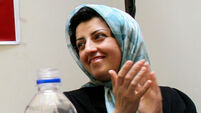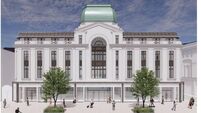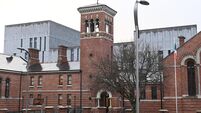Archaeologists uncover tombs at Peruvian ruins
Archaeologists have uncovered a multi-level grave site at Peru’s ancient ruins of Pachacamac, including mummy bundles containing whole families.
There were also bodies of pilgrims who presumably sought cures from an oracle deity for diseases like syphilis, tuberculosis and cancer, the project’s leader said.
“What is interesting in this cemetery is that it is totally intact, and we have mummies of different epochs, different periods, and they have their burial goods with them,” archaeologist Peter Eeckhout, of the Free University of Brussels, said.
“This will be very useful for us to (determine) the chronology of the site and the succession of the cultures here.”
Pachacamac, 20 miles south of the capital, Lima, was a sprawling ceremonial centre of 18 mud-brick pyramids with ramps and plazas ruled by the Ychsma lords from 900 AD to 1470. Today, the ruins are a major tourist attraction.
Eeckhout started to excavate the site in 1999, heading an international team of archaeologists in the Project Ychsma (pronounced EESH-MA).
The Inca Empire conquered the religious centre less than a century before Spanish Conquistador Francisco Pizarro’s brother, Hernando, plundered the site in 1533 and destroyed the idol that served as an oracle.
Eeckhout said that archaeologists began exploring Pachacamac in the 1890s but found much of the nearly 1,500-acre ruins already looted, and quickly ran out of intact tombs to explore.
But this year, he said, his team decided to dig near a pyramid ramp that had been overlooked. So far, they have excavated 69 tombs and funerary bundles in the area.
“Part of the cemetery had been protected from looting in the colonial and modern periods thanks to the crumbling and destruction of some walls” which formed a protective cover, he said.
Digging down more than a dozen feet, they found three levels of burial remains.
“In the upper layer of burials, we have an abnormal proportion of individuals who were suffering from very grave and lethal diseases, such as syphilis, tuberculosis and cancer,” he said.
“This leads us to think that these people were brought to Pachacamac from other sites in order to be cured by the great god that had his sanctuary here.”
Lower down were funerary bundles dating back to before the Inca Empire turned Pachacamac into a pilgrimage centre around 1470.
“The second layer is much more local, related to the region of Pachacamac and we have what we traditionally interpret as family burials,” Eeckhout said.
“In the same mummy bundle, we have one male, one female and the children. We are currently excavating these mummies.”
He said his team had found several sealed tombs that they had not yet breached, and a third level with mummified remains from an even earlier period.
This year’s excavation season ends this month and the excavation site will be filled in to protect it until digging resumes next year.














